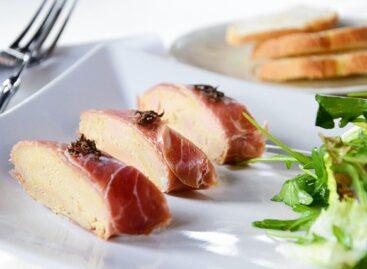There is a serious opportunity in almond cultivation
Almonds are an increasingly sought-after product worldwide, including in our country. One of our best-known nuts, it has significant potential due to its versatile uses, mechanization of production and resistance to climatic conditions. The flow of information and knowledge transfer also play a significant role in increasing the efficiency of production.
The National Chamber of Agriculture and the Association of Almond Growers of the Balaton Uplands organized an almond professional day. Almonds, along with walnuts and hazelnuts, are one of our most important nuts. Although we have traditional fruit species and numerous domestically bred varieties, they are grown in a relatively small area in our country, approximately 500 hectares, of which 136 ha are located in the Balaton Uplands. The annual yield is approximately 350 tons. We consider it a small crop, but at the same time, almonds have significant potential due to their versatile uses and mechanization of production.
The flow of information and knowledge transfer significantly help the efficiency of production, to which the National Chamber of Agriculture is committed. At the conference held in Balatonalaki, the participants were introduced to numerous technological opportunities in the lecture of Professor Károly Hrotkó, and to the most significant plant protection challenges in the lecture of Professor Béla Pénzes. Furthermore, there was an opportunity to share producer experiences during the lectures of Austrian almond producer Simon Hinterplattner and local almond producer Zsolt Wertán, as well as during the tour of the Balatonakali municipality and Nagyházi Szilvia plantation.
Almond cultivation is similar to apricot in many ways, but it is a crop that can be maintained for a longer period. Another advantage is that it can adapt to changed climatic conditions without irrigation. Although it is one of the earliest flowering fruit species, winter frosts hardly damage it. The success of almond cultivation depends largely on the selection of the growing area and technology. In Europe, alongside traditional cultivation methods, modern, intensive plantations are gaining more and more importance, requiring significantly less manual labor. A hedge-like plantation structure is created using the so-called flat wall pruning and topping, and the height and width of the leaf wall are determined based on the harvesting machine.
Related news
NAK: Despite the bird flu epidemic, there will be no shortage of goose liver
🎧 Hallgasd a cikket: Lejátszás Szünet Folytatás Leállítás Nyelv: Auto…
Read more >Newer plant protection products are available for small-scale cultivation
🎧 Hallgasd a cikket: Lejátszás Szünet Folytatás Leállítás Nyelv: Auto…
Read more >Campaign about the sustainability of meat consumption
🎧 Hallgasd a cikket: Lejátszás Szünet Folytatás Leállítás Nyelv: Auto…
Read more >Related news
Hungarian Product is 20 years old – a reliable compass in the domestic FMCG sector
🎧 Hallgasd a cikket: Lejátszás Szünet Folytatás Leállítás Nyelv: Auto…
Read more >KPMG CEO Outlook 2025: replanned trust
🎧 Hallgasd a cikket: Lejátszás Szünet Folytatás Leállítás Nyelv: Auto…
Read more >Sunday lockdowns may return in Europe
🎧 Hallgasd a cikket: Lejátszás Szünet Folytatás Leállítás Nyelv: Auto…
Read more >






